We often see the Chinese Hanfu face veil in Chinese movies and TV series, often bringing a sense of mystery, so today we're going to take a deeper look at it.
Two Kinds of Hanfu Face Veil in Ancient China
Mili (羃䍦, mi lí)
Mili, a unique ancient hat ornament, was mainly used to conceal the face and body. It was first recorded in writing in the Jin Dynasty and was worn by both men and women at the beginning of its popularity, but it was mainly used by women in the Sui and Tang Dynasties and was abandoned in the Tang Dynasty.
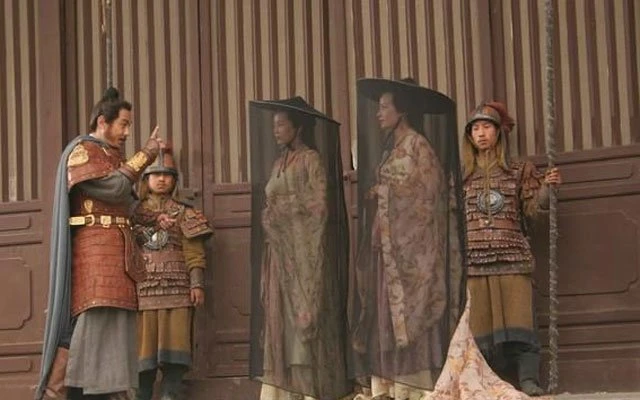
Weimao (帷帽, wéi mào)
Weimao was originally a hu garment, originally called a Mili, which was usually made of black yarn, surrounded by a wide brim, with a hanging silkscreen or thin silk that reached down to the neck to cover the face. Usually, the length of the curtain is just long enough to show the shoulders.
Historical Origins of Two Hanfu Face Veil
Mi and Li were first used to refer to two items, namely, a silk scarf and a white cap respectively. It was not until the Jin Dynasty that the two words "Mili" appeared in combination.
In ancient times, the northwestern region was prone to sandstorms and strong sunshine, so men in the Tuyuhun (吐谷浑, an ancient country located in the upper valleys of the Qilian Mountains and the Yellow River during the Western Jin and Tang dynasties) region wore hats or Mili with long skirts to protect themselves from the sun and sandstorms.
By the Sui Dynasty, Mili was popular among the upper classes of Tuyuhun, still mostly worn by men. During this period, in addition to the Tuyuhun wearing Mili in the northwest, the ethnic minorities in the southwest and the Han Chinese in the Central Plains also had the custom of wearing Mili, which was the result of the spread of Mili to the east and south.
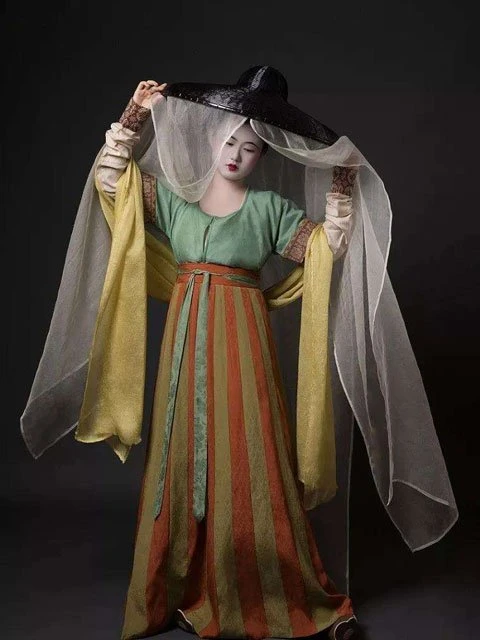
restored version of Mili
Wearing Mili was popular from the Northern Qi to the Tang dynasty. Not only was it an important part of the Chinese imperial court's dress system, but traditional rituals also contributed to the institutionalization of the Mili.
With the consolidation of Wu Zetian's political status and the improvement of women's self-consciousness, wearing the "full-body barrier" Mili obviously could not meet the aesthetic requirements of women, at this time the Mili is no longer popular with women.
In the meantime, women followed suit, wearing Weimao, which gradually became a trend that was not limited by the ban. Weimao was generally popular, and Mili declined due to the laxity of the decree, so much so that it was abolished soon after.
The removal of Mili from the Tang ritual system can reflect the increased social status of women in the Tang dynasty during this period. In the mid to late Tang dynasty, confident women were no longer strictly confined to their inner chambers, they began to remove the Mili.
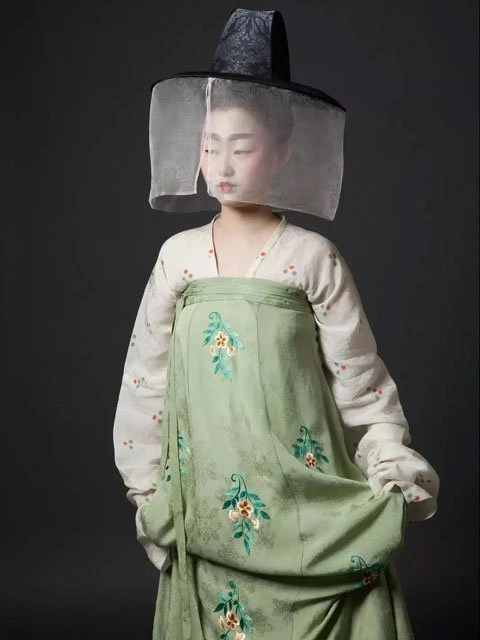
restored version of Weimao
Characteristics of Two Hanfu Face Veil
From the literature and physical data analysis, Mili has four characteristics:
- a hat and light, soft scarf two parts of the synthesis;
- a large area, from top to bottom through the body, can cover the face and most of the body;
- is translucent, horseback riding can see in front of the clear sight, can be opened by hand;
- can be decorated.
The Weimao was made popular by overcoming the tediousness of the Mili,
- is short, light, and only up to the neck in length, with the face slightly exposed;
- made of silkscreen, is translucent, too;
In 1972, two pieces of clay figurines of women on horseback were unearthed in Astana, Turpan, Xinjiang, and after the restoration of the figurines, the original appearance of Weimao can be seen. One of the painted female figurines on horseback is wearing a floral Duijin shirt and a long skirt with a black pattern outlined on it. Foot stomp pointed black boots. Wearing a tapered Weimao with a yellow silkscreen attached to the brim, the eyebrows, eyes, mouth, and nose are slightly visible, and the cap reaches to the neck. This is a true reflection of the Weimao.
Summary
Mili originated from the Northwest ethnic minority during the Western Jin Dynasty, as a system set in the Northern Qi, through the Sui Dynasty. In the process of development, it was gradually combined with traditional Chinese culture to form a kind of costume in line with the Chinese ritual system, reflecting the characteristics of the era when "Hu culture" and Confucianism continued to merge since Wei Jin.
In the early stage, it had the practical function of shading the sun and sand, but later it gradually became the ritual restriction for women to cover their faces when traveling. In the early Tang Dynasty, women's wearing of Mili was much more common than that of their predecessors as a fashionable system and social custom. After the Emperor Zhongzong of the Tang Dynasty, Mili, which had been popular for nearly 5 centuries, was withdrawn from the ancient dress system.
Weimao began to appear in the Sui Dynasty, used in parallel with Mili. The Weimao quickly replaced the Mili during the Wu Zetian period with the advantage of being easy to wear for travel. The latter two were replaced by the more liberal Hu cap (胡帽). This change not only reflected the aesthetic taste of Tang women, but also the openness and tolerance of Tang society.
Finally, enjoy the Hanfu face veil that appears in Chinese movies and drama!
For more information on Hanfu styles and the history of Hanfu, you can click here.
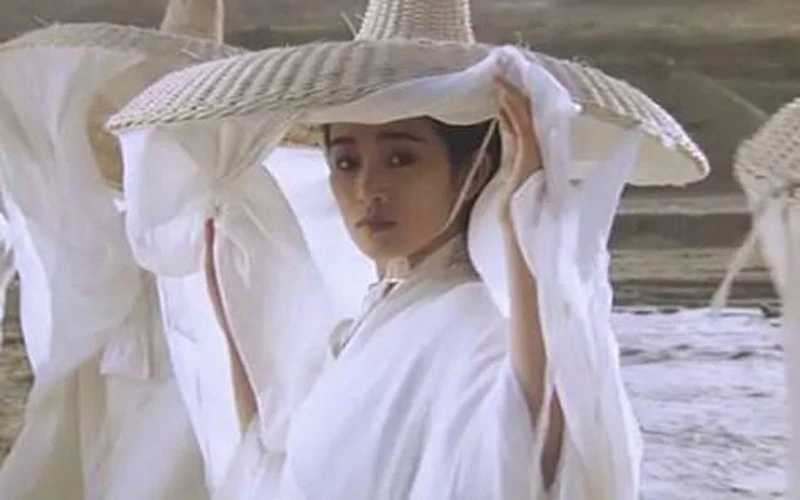

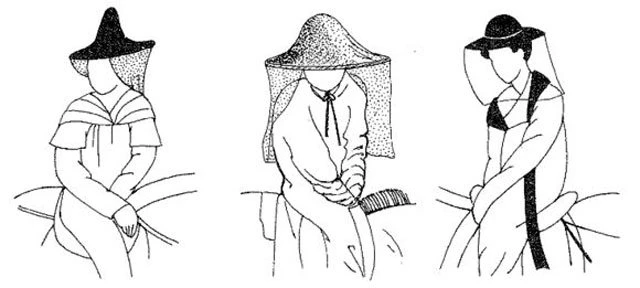


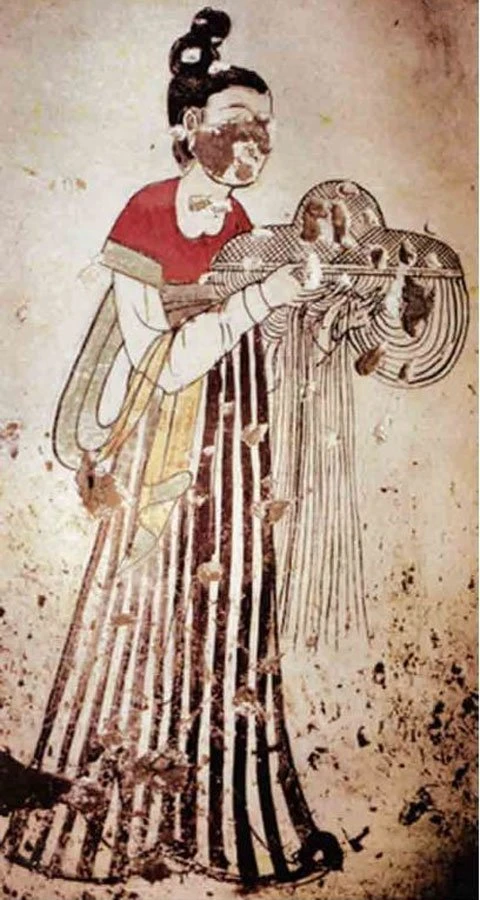
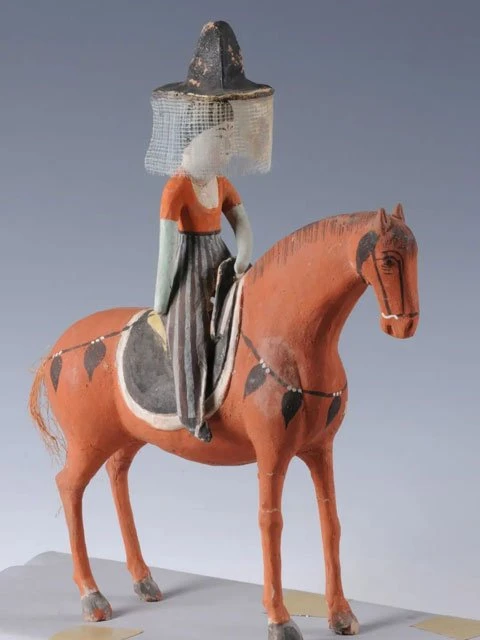

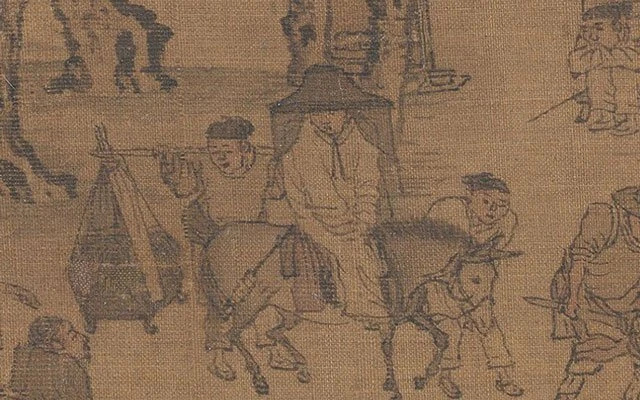
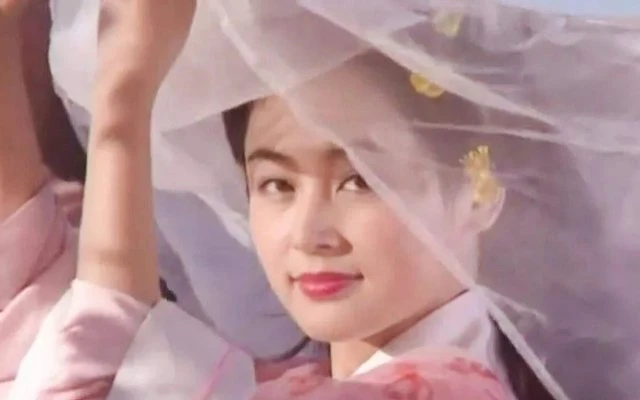
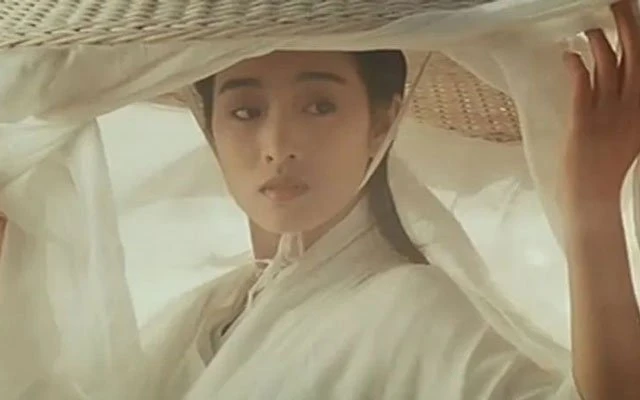
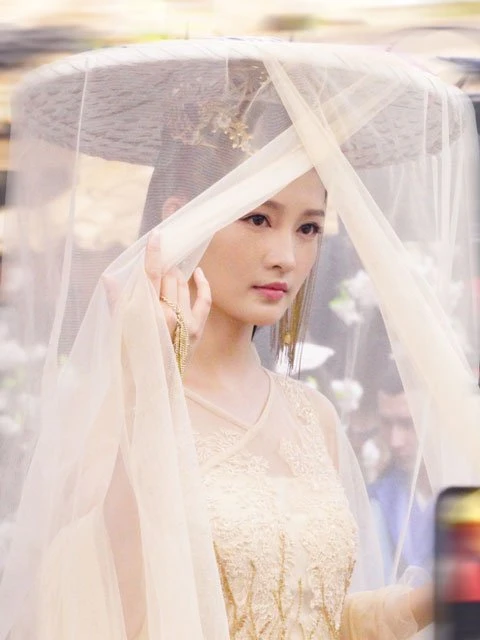

Sebenarnya tidak hanya Islam yg memakai cadar dan kerudung, kebanyakan dr negara2 ada hanya saja agak beda tapi fungsi sama
Yah begitulah, biasanya patriarki memang menyarankan wanita untuk menutupi diri, contohnya penggunaan penutup (baik kepala maupun seluruh badan); pengurungan/pingitan; dan/atau menuruti keinginan pria. Maaf kalau terdengar agak kasar atau bagaimana 🙏
Buktinya pun disebutkan dalam artikel. Tadinya, Mili digunakan para pria sebagai pelindung dari matahari dan debu, di era Dinasti Tang pun wanita yang "percaya diri" dan "bebas" menolak memakai Mili. Bukan bermaksud negatif, tapi ya... sejarah menunjukkan begitu, berulang kali. Dan nggak bisa generalisasi, dibilang "cadar dan kerudung" juga, lebih ke arah "penutup seluruh badan".
Bagus juga dipakai, orang jaman dahulu wanita lebih tertutup